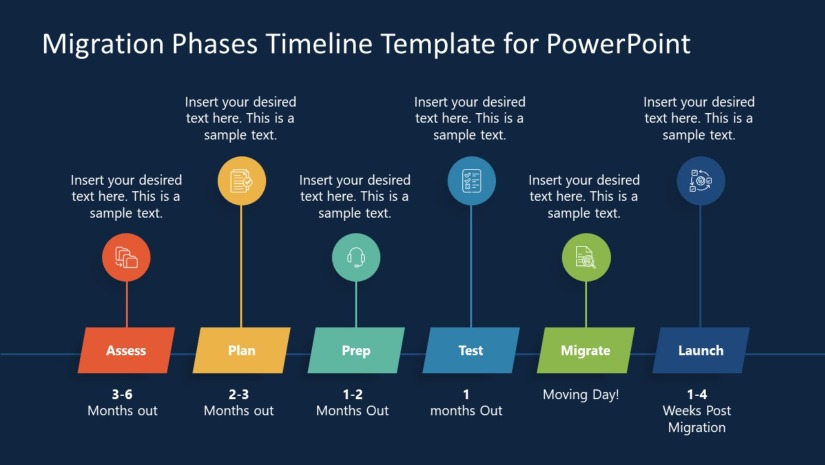
What Is Website Migration & Its Types Introduction
Introduction:
Website migration is a crucial process that involves transferring a website from one location to another. This relocation can occur due to various reasons, such as changing hosting providers, shifting to a new domain, upgrading to a different platform, or restructuring the website's architecture. While website migration may seem like a daunting task, it is often necessary to improve website performance, security, or user experience. In this blog, we will explore the concept of website migration, its significance, and the different types of website migration that businesses and website owners may encounter.
Website migration refers to the process of moving a website from one location to another. This relocation can involve transferring all the website's files, databases, configurations, and other relevant components to a new hosting server, domain name, content management system (CMS), or design layout. Website migration is typically undertaken for various reasons, such as improving website performance, security, scalability, or user experience.
Key points about website migration:
- Change of Hosting Provider: One common reason for website migration is switching to a new web hosting provider. This could be driven by factors like better server performance, improved customer support, cost-effectiveness, or the need for more reliable hosting services.
- Domain Name Change: Another type of website migration involves changing the website's domain name. This could be due to rebranding, domain expiration, or a desire to adopt a more memorable and relevant domain name.
- CMS Platform Migration: Websites built on content management systems, such as WordPress, Joomla, or Drupal, may undergo CMS migration. This happens when website owners want to switch to a different CMS platform to access better features, security, or ease of use.
- Design and Layout Migration: Design and layout migration refers to making significant changes to the visual appearance and user interface of a website. This may include updating the website's theme, templates, and overall design to give it a fresh look or adapt to current design trends.
- Protocol Change: Protocol migration involves transitioning from one communication protocol to another, often seen in the switch from HTTP to HTTPS. This change is essential for enhancing website security and user trust since HTTPS ensures encrypted data transmission.
- Server Location Change: Some website migrations involve moving the website to a server located in a different physical location or data center. This can help improve website loading times for users in specific geographic regions.
Website migration can be a complex process that requires careful planning and execution to minimize disruptions and avoid potential issues like data loss, broken links, or downtime. Properly managing the migration ensures that the website remains fully functional, retains its SEO rankings, and maintains a positive user experience throughout the transition.
Before undertaking website migration, it is crucial to back up all website data, thoroughly test the new environment, and communicate the changes to users to ensure a smooth and successful migration. Failure to execute website migration properly can lead to undesirable consequences, impacting the website's performance, search engine rankings, and user engagement.
Types of Website Migration:
- Server Migration: Server migration involves moving a website from one web hosting server to another. This type of migration could occur when you want to switch hosting providers due to issues like better performance, customer support, or pricing. It is essential to carefully plan the server migration to prevent downtime and data loss during the transfer.
- Domain Name Change: Domain migration is the process of changing the website's domain name. This may happen due to rebranding, better domain availability, or the need to align the website with a more relevant and memorable domain name. Properly managing the domain name change is crucial to preserve SEO rankings and ensure that users can still access the website through the new domain.
- CMS Platform Migration: Content Management System (CMS) migration involves moving a website from one CMS platform to another. Reasons for CMS migration may include a desire for better features, improved security, or better scalability. However, CMS migration can be complex, and it requires thorough planning to ensure that all content, media, and configurations are correctly transferred.
- Design and Layout Migration: A design and layout migration refers to a significant change in the visual appearance and user interface of a website. This could involve updating the website's theme, templates, and overall design to give it a fresh look or adapt to changing design trends. During this type of migration, it is essential to maintain consistency in branding elements and user experience.
- Protocol Change: Protocol migration involves switching from one protocol to another, such as HTTP to HTTPS. This type of migration is crucial for enhancing website security and user trust, as HTTPS ensures encrypted data transmission. However, improper implementation can lead to security issues and broken links, so careful planning and execution are essential.
Why would I require a website migration?

- Changing Hosting Providers: If you are experiencing issues with your current hosting provider, such as slow loading times, frequent downtime, inadequate customer support, or scalability limitations, you might decide to migrate your website to a more reliable and efficient hosting provider.
- Improved Performance: As your website grows, it may outgrow its current hosting resources, leading to decreased performance. Migrating to a more robust server or a cloud-based hosting solution can significantly improve your website's loading speed and responsiveness.
- Better Security: Security is a critical concern for every website owner. If your current hosting environment or CMS is prone to security vulnerabilities, you might consider migrating to a more secure platform to protect your website and user data from potential threats.
- Domain Name Change: Rebranding or changing your website's focus might necessitate a domain name change. In such cases, you would need to migrate your website's content and data to the new domain.
- Content Management System (CMS) Upgrade: If you're using an outdated or limited CMS, you might want to switch to a more feature-rich and user-friendly platform. This kind of migration allows you to take advantage of better tools and functionalities for managing your website's content.
- Site Redesign or Overhaul: When giving your website a complete visual overhaul or restructuring its navigation and layout, you would need to perform a design and layout migration. This ensures that the updated version of your website appears to users seamlessly.
- Protocol Transition: Upgrading from HTTP to HTTPS is crucial for improved security and better search engine rankings. Website owners should migrate to HTTPS to enable encryption and build user trust.
- Geographic Relocation: If you're moving your business to a different country or region, you might choose to migrate your website to a server that is physically closer to your new target audience. This can enhance website performance for users in the new location.
- Server Technology Upgrade: Over time, server technologies evolve, and older technologies may become obsolete or unsupported. Migrating your website to a server with modern technology ensures compatibility and optimal performance.
- Consolidation and Reorganization: In some cases, businesses may undergo mergers or acquisitions, leading to the consolidation of websites. Website migration helps bring multiple websites together under a single domain or platform.
It's essential to approach website migration with careful planning and consideration, as improper execution can result in downtime, data loss, broken links, and negative impacts on search engine rankings and user experience. Before initiating any migration, always create backups and thoroughly test the new environment to ensure a seamless and successful transition.
Does Site Migration Affect SEO?
Yes, site migration can significantly impact SEO if not executed properly. Search engine optimization (SEO) is crucial for a website's visibility and organic traffic from search engines. During a site migration, various changes occur that can affect the website's search engine rankings, organic traffic, and overall SEO performance. Here are some ways site migration can affect SEO:
- Keyword Rankings: When a site is migrated, search engines reevaluate the website's content, structure, and URLs. If the migration is not properly handled, it can lead to a drop in keyword rankings, causing the website to lose its organic search visibility.
- URL Structure: Changing URLs during migration can result in broken links and 404 errors if not correctly redirected. Broken links can negatively impact user experience and lead to a loss of SEO value for the affected pages.
- Duplicate Content: If site migration results in duplicate content issues (multiple versions of the same content accessible through different URLs), search engines may penalize the website for duplicate content, leading to lower rankings.
- Page Indexing: During migration, search engines may take time to reindex the new site structure, leading to temporary fluctuations in rankings or disappearance from search engine results pages (SERPs).
- Page Speed: Site migration can affect the website's loading speed, which is a crucial SEO factor. If the new hosting or CMS is not optimized for speed, it can lead to lower rankings and reduced user engagement.
- Backlinks: Migrating a website can cause backlink issues. If backlinks are not properly redirected to the new URLs, the website may lose valuable link equity, impacting its authority and rankings.
- Mobile Friendliness: If the new website design is not mobile-friendly, it can negatively affect SEO, as search engines prioritize mobile-friendly sites in their rankings.
- Website migration is a complex process that requires careful planning and execution to minimize disruptions and potential issues. Below is an important website migration checklist to help you ensure a successful migration:
- Backup Your Website: Before initiating any migration, create a full backup of your website's files, databases, and configurations. This ensures you have a copy of your website in case anything goes wrong during the migration process.
- Set Clear Objectives: Define the goals and objectives of the migration. Understand why you are migrating the website and what you want to achieve with the new setup.
By following this checklist and taking a methodical approach to website migration, you can ensure a smooth transition and minimize any negative impact on your website's performance, SEO, and user experience.
- Choose the Right Timing: Pick a time for migration when your website experiences low traffic to minimize the impact on users.
- Inform Stakeholders: Communicate the migration plan to all relevant stakeholders, including team members, clients, and users. Let them know about any potential downtime or temporary inconveniences.
- Select a Reliable Hosting Provider: If changing hosting providers, research and choose a reliable hosting provider that meets your website's requirements for performance, security, and support.
- Test the New Environment: Set up the new hosting environment and thoroughly test the website's functionality, performance, and security.
- Plan URL Structure and Redirects: Plan the new URL structure and create 301 redirects from the old URLs to the corresponding new URLs. This ensures search engines and users can find the new content.
- Update Internal Links: Check all internal links within the website and update them to reflect the new URL structure.
- Handle External Links: Reach out to websites linking to your old URLs and request them to update their links to the new URLs. For critical backlinks, use 301 redirects to retain link equity.
- Update DNS Settings: If changing the domain name or DNS settings, update the DNS records to point to the new hosting provider.
- Update SSL Certificates: If migrating to HTTPS, ensure you have a valid SSL certificate for the new domain and update all internal links and resources to use HTTPS.
- Check Page Load Times: Optimize the new website for speed and performance to provide a positive user experience.
- Check Mobile Responsiveness: Ensure the new website is mobile-friendly and responsive across different devices and screen sizes.
- Test Forms and Functionality: Test all forms, interactive elements, and functionalities to ensure they work correctly after migration.
- Update XML Sitemap: Generate an updated XML sitemap and submit it to search engines to help them discover the new site structure.
- Monitor Crawl Errors: Regularly monitor crawl errors in search console and promptly fix any issues that arise.
- Monitor Traffic and Rankings: Keep a close eye on website traffic and search engine rankings during and after migration to detect any significant changes.
- Update Analytics and Tracking Codes: Update your website's analytics and tracking codes to ensure data collection continues accurately.
- Monitor Post-Migration: After the migration, closely monitor the website for any issues, and be prepared to address them promptly.
- Keep the Old Site Accessible: Maintain access to the old site for a while to help users and search engines find the new URLs.
- Geographic Relocation: Geographic migration involves moving the website to a server located in a different physical location or data center. This can be beneficial if you want to cater to a specific region's audience and improve website loading times for users in that area.
- Consolidation and Rebranding: Website migration might be necessary due to business restructuring, mergers, or acquisitions. In such cases, multiple websites may be consolidated into a single website, or the website's branding and focus might undergo a complete transformation.
It is crucial to thoroughly plan and execute website migration to minimize the negative impact on SEO, user experience, and overall website performance. Before initiating any migration, conduct thorough testing in a staging environment to identify and resolve any potential issues. Communicate the migration plan to stakeholders and users, and have a rollback plan in place in case any unexpected challenges arise. By taking a methodical and cautious approach, website owners can successfully navigate the complexities of website migration and achieve the desired outcomes with minimal disruptions.
- Version or Platform Upgrade: Upgrading to a new version of a CMS or a different website platform might require migrating existing content and data to the new system. This can provide access to new features, better security, or improved performance.
- E-commerce Platform Change: E-commerce websites often undergo platform migration to switch to a different e-commerce solution, offering more flexibility, enhanced features, or better integration with other business systems.
- Content Restructuring: Large websites with extensive content might need to undergo content restructuring during migration. This ensures better organization, improved navigation, and enhanced user experience.
- Database Migration: If there's a need to change the database system or host, database migration is performed to transfer data from the old database to the new one.
- Subdomain or Subdirectory Changes: Migrating from a subdomain to a subdirectory or vice versa might be necessary to better organize website content or for SEO considerations.
- Platform-Specific Migration: Migrating a website from one platform to another, like moving from a static HTML website to a dynamic CMS-driven website or vice versa.
- Language or Internationalization (i18n) Migration: If a website is expanding to target international audiences or adding support for multiple languages, it might require language or internationalization migration.
- Security and Compliance: In certain cases, migration is essential to meet specific security and compliance requirements, especially if the current platform is not up to the necessary standards.
Conclusion:
Website migration is a fundamental process that website owners and businesses may undertake to enhance their online presence, performance, and user experience. Whether it's changing serv ers, domains, CMS platforms, designs, or protocols, website migration demands meticulous planning and execution. By understanding the various types of website migration and following best practices, website owners can successfully navigate through the migration process and achieve their desired outcomes with minimal disruptions. Remember to back up your website data, thoroughly test the new environment, and communicate the changes to users to ensure a smooth transition during website migration.







